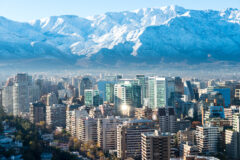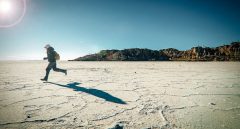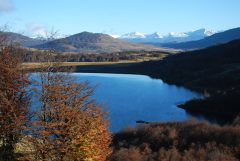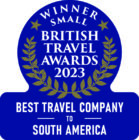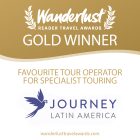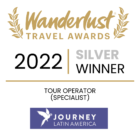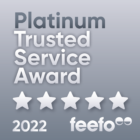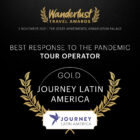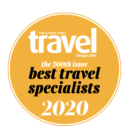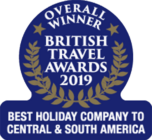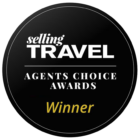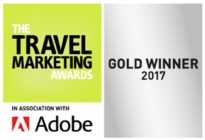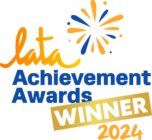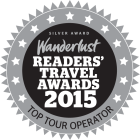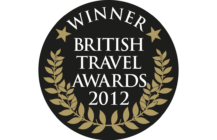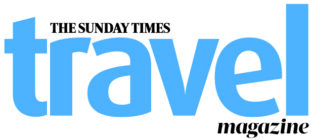Private Journeys
Self-drive Chile: Off the beaten track
14 days from £4,600pp
(based on two people sharing & excluding flights)
Essentials
-
Tour info
-
Country info
-
What's included
Tour info
Transport
3 domestic flights; 2 ferries, self-drive car route.
Accommodation
We’ve chosen small and friendly mid-range guesthouses and cosy rural lodges; all are comfortable and well located for exploration of the area. They all have well-equipped rooms, private bathrooms and heating. Our favourite, Cabañas Mirador del Guadal, has heavenly views of Lago General Carrera in deepest Patagonia.
Meals
Breakfast daily, lunch days 2,3 & 5.
Guides
We carefully select our local partners in Latin America, some of whom we have worked with for over 25 years. Their English-speaking guides understand the expectations of our clients very well, and are consistently singled out for praise by the latter on their return.
Summary Of Nights
14 days, 13 nights: Santiago 1, Castro 2; Puerto Varas 2; Puerto Tranquilo 2; Caleta Tortel 2; Puerto Guardal 2; Santiago 2.
Daily Spend
It is very difficult to give a guideline for essential expenses but a budget of around US$50 per person per day should cover the cost of meals not included in the holiday itinerary, drinks and the odd souvenir. Eat at the best restaurants and you will pay considerably more.
A budget of approx US$200 should be sufficient to cover fuel costs for the self drive sections.
Currency
The unit of currency in Chile is the peso.
How To Take It
Cash machines are available in Santiago, Castro and Puerto Varas and so taking a debit or credit card with a PIN number is the most convenient way of withdrawing money while on your trip, and in most shops and restaurants you can also pay by card. However, since cards can get lost, damaged, withheld or blocked, you should not rely exclusively on a card to access funds.
We recommend that additionally you take a reasonable quantity of US dollars cash (no more than is covered by your insurance), which you can exchange into local currency in the larger towns, and possibly some travellers’ cheques, though these are gradually falling out of use (American Express are the most widely accepted). Dollar bills should be in good condition, soiled or torn bills may be refused.
Have a ready supply of Chilean pesos for spending in the self-drive section where there are few working ATMs and credit cards may not be accepted.
Tipping
Tips are expected and local guides often rely on their tip as a significant proportion of their income.
Most service industry workers will expect a tip of some kind and so it is useful to have spare change for hotel porters, taxi drivers and the like. It is common to leave 10 – 12% in restaurants.
Insurance And Documents
Travel insurance is essential.
Details of our recommended policy can be found on our Travel Insurance page.
Car Insurance:
Your vehicle hire includes limited CDW (Collision Damage Waiver) insurance with an excess payable of approx US$1,150-US$1,800 in the event of loss or damage. Limits and certain exclusions do apply. Please contact us for further details.
From 8 June 2015 new regulations will apply concerning the paper counterpart of UK driving licences. This may affect what is required by the rental company when you collect your car.Please check https://www.gov.uk/government/news/driving-licence-changes for further details.
Trip Suitability
This is partly a self-driving holiday for independent-minded clients seeking the freedom to explore without the support of local guides and drivers but with the security of pre-booked accommodation. You should be confident to navigate along roads outside the UK, driving on the right. Some Spanish as well as mechanical knowledge, for example the ability to change a tyre, is highly recommended.
The self-drive section is off-the-beaten-track Patagonia for adventurous travellers; there are few services for travellers en route; fill up with petrol whenever you can. Routes travelled in the Aisén region are all on gravel roads for which 4-wheel drive is advisable. Let us know if you have a strong preference for automatic or manual transmission as vehicles supplied can vary. GPS equipment is not normally available but you will receive basic written directions and we will send you our Rules of the Road document with helpful tips specific to driving in Chile.
Climate
In the Santiago area expect a Mediterranean type climate though it can snow in winter (June-August). In October, November, March and April temperatures range between 15°C and 25°C and there’s a good deal of sunshine. January and February are hot, around 30°C or higher.
The lake district has a weather pattern not dissimilar to that of the UK, though summers tend to be hotter and sunnier and winters wetter.
The Aisén region has a cool temperate climate, in places close to the coast it rains up to 300 days a year but in others, such as the area around Coyhaique, a rain shadow effect reduces precipitation. Warm sunshine is possible during the summer (Dec-Mar). However, as in all parts of Patagonia you should anticipate encountering all seasons, especially in the shoulder months of November and April. It can be very cold in winter (May-September), when roads may be blocked and hotels are closed.
Clothing And Special Equipment
For day-to-day wear you should go prepared to encounter all seasons. Both clothing for both hot and cold conditions including sun hat a light fleece jacket and a Gore-Tex (or similar) outer shell. Trousers, skirt or shorts made from light, quick-drying synthetic materials work well. If you plan to eat in smart restaurants in Santiago, although clothing is not formal (no need for jacket and tie), something quite smart would be appropriate. Strong, comfortable footwear is essential and you should bring umbrella, insect repellent, sun block and sun glasses. You might take swimwear for the odd dip in a natural pool.
Vaccinations
Preventative vaccinations are recommended against the following: typhoid; polio; tetanus; hepatitis A. You should consult your GP for specific requirements.
You can also find helpful information on the Masta Travel Health website.
Visas
Holders of a full British passport do not require a visa, although passports must be valid for at least 6 months after the trip begins. Anyone with a different nationality should enquire with us or check with the relevant consulate.
If flying to the US, or via the US you will need to fill in your online ESTA application.
Airport Taxes
If you have purchased your flights through Journey Latin America, the international departure tax is usually included in the ticket.
Country info
When is the best time to visit Chile?
Chile is a year-round destination. The southern hemisphere's seasons are the reverse of Europe’s, with December-February as mid-summer. Spring (October-November) and autumn (March-April) can be pleasant and quieter, while winter (June-August) is coldest. The lake district, Santiago and Valparaiso have warm, sunny summers, while in Patagonia weather is more unpredictable. The Atacama Desert has extremes of heat and cold, while Easter Island has pleasant temperatures all year, warmest October-March, cooler June-September.
For more detailed information visit our When To Go section.
What is the official language of Chile?
The official language of Chile is Spanish.
How do I get local currency in Chile?
The local currency in Chile is the Chilean Peso. Notes can be withdrawn from the many ATMs in larger towns and cities using a UK credit or debit card. Limits may be lower than your UK bank allows. There are also many banks and money exchanges (casas de cambio) where you can exchange US dollars cash; rates for euros and sterling are harder to find and frequently poor. Non-resident foreign guests at hotels in Chile do not normally pay the 19% VAT on most extras (such as food and drink consumed on the premises) if the bill is settled in US$ (cash or credit card) upon checking out.
What's the time difference between Chile and UK?
The time difference between the UK and Chile is GMT -4 hours. Sometimes daylight saving is observed in the summer, from Sep/Oct to early Mar.
What countries combine well with Chile?
Bolivia, accessing the south of country from San Pedro de Atacama, travelling via salt lakes of the Salar de Uyuni; Argentina, crossing the Andes over one of several scenic passes: from the Atacama Desert in the north to Salta, from Santiago to Mendoza, via the lakes crossing from Puerto Varas to Bariloche in the lake district and from Torres del Paine to El Calafate in Patagonia.
Do I need a visa to visit Chile?
Holders of a full British passport do not require a visa, although passports must be valid for at least 6 months after the trip begins. Anyone with a different nationality should enquire with us or check with the relevant consulate.
If flying to the US, or via the US you will need to fill in your online ESTA application.
What vaccinations do I need for Chile?
Please check Travel Health Pro for information on health recommendations and vaccinations for the destinations you are visiting. Please note that many Latin American countries require proof of vaccination against Yellow Fever if you have recently travelled to another country where Yellow Fever is present.
What are the festivals, cultural and sport events in Chile?
Tapati festival, Easter Island is normally during the first 2 weeks of February with traditional music, dance and sports.
On New Years Eve Valparaiso has an impressive firework display.
What do I need to know about altitude in Chile?
Whilst a typical holiday in Patagonia presents no challenges with altitude, parts of northern Chile (Lauca National Park and parts of the Atacama Desert) offer a spectacular introduction to the high Andes, with several attractions at over 3,000m. Travel to high altitude can cause mountain sickness and even if you feel fighting fit it’s important to take things easy and stay hydrated (drink plenty of water, avoiding alcohol and caffeine) as you get used to the thin, dry air. You may initially notice a headache, dizziness or breathlessness and this usually improves with acclimatisation. If you are pregnant or taking the contraceptive pill, have a medical condition such as heart or lung condition, anaemia, asthma, high blood pressure you should seek the advice of your GP before booking. We also recommend you check your travel insurance covers travel to high altitude. If you’re taking the family, remember small children may be less capable of communicating altitude-related symptoms effectively: keep an eye on them too. Rest assured we will plan your itinerary carefully, taking into account any time spent at altitude. If you have any questions or concerns about altitude please speak to your travel expert.
Further advice on travel to altitude is available on www.travelhealthpro.org.uk.
Inspired by this trip
Our exciting range of articles on Latin America explore everything from iconic destinations and lesser-known cultural gems to delicious traditional recipes. You’ll also find exclusive travel tips, first-hand client reviews and the chance to get your personal questions answered by our travel experts.
Papagaio
Your edit for Latin American inspiration
Our exciting range of articles on Latin America explore everything from iconic destinations and lesser-known cultural gems to delicious traditional recipes. You’ll also find exclusive travel tips, first-hand client reviews and the chance to get your personal questions answered by our travel experts.
View Extraordinary Inspiration

